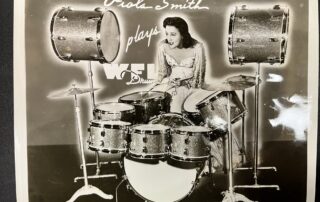Karen Ann Hoffman believes it’s important for her to feel connected with her Oneida heritage.
“I think it’s critical for all people to know who they are, and I think that sense of identity is what keeps all of us grounded,” Hoffman said.
That’s why over the last quarter century, the Stevens Point resident has been both a student and teacher of Iroquois raised beadwork. It’s an ancient art form practiced by the Five Nations that make up the Iroquois Confederacy, including the Oneida. Beads are sown to create intricate patterns with a three dimensional effect. Hoffman says its use of velvet and layered beads separates it from other Native American art forms.
“A lot of Indian people use beads, but only members of the Iroquois Confederacy use beads and velvet in this embossed, raised combination,” Hoffman said.
Examples of Iroquois raised beadwork can be found in the tribe’s jewelry, trinkets and clothing. Hoffman uses raised beadwork to produce contemporary art such as vases, pillows and placemats that are meant to be displayed in museums. She often incorporates her tribe’s history into her work.
“I put our origin story in here into these pieces. I put the stories of the stars into the pieces. I put the stories of how the earth came to be into these pieces,” Hoffman said. “They’re all part of our Iroquois heritage.”
For instance, one of Hoffman’s pieces is a rocking chair that tells the Iroquois creation story. She took a small rocking chair bought at a thrift store and lined it with green velvet. She then sewed a visual retelling of the Iroquois tribe’s origin story onto the panels of the chair. The final result encapsulates Hoffman’s modern twist on an ancient art form.
“It’s my passion to create pieces that have never been made before, but are deeply, deeply linked to those pieces that give rise to our art forms ten and 12,000 years ago,” Hoffman said.
Her work has appeared in art galleries across the country, including the Smithsonian Museum of the American Indian in Washington D.C. Hoffman also travels around Wisconsin teaching raised beadwork classes.
“I hope that someone will pick up these gifts and carry them on forward,” Hoffman said. “I know it’s my responsibility to be this link in this chain.”
Hoffman says the hardest part isn’t learning the sewing techniques, it’s having the patience to see a piece through. It can take weeks or even months to finish a piece, but she says it’s worth it to pay homage to her Oneida elders.
“I am at a place in my life where I need to thank them, and pay forward what they have given to me,” Hoffman said. “The only way I know how to do it is with a needle and thread.”










